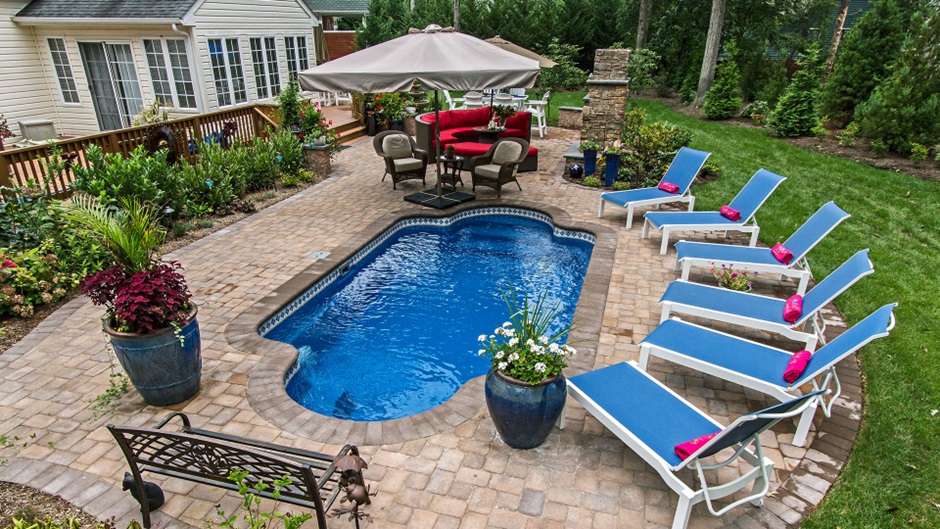Fiberglass pools are a popular choice for homeowners due to their durability, low maintenance requirements, and aesthetic appeal. However, to maintain their pristine condition and ensure longevity, regular cleaning and maintenance are essential. A clean pool not only enhances its visual allure but also promotes a healthy swimming environment. In this article, we will explore key tips and best practices for keeping your fiberglass pool sparkling and in optimal condition year-round.
Understanding the Basics of Fiberglass Pools
Before diving into pool cleaning tips, it’s important to understand the unique properties of fiberglass pools. Unlike traditional concrete or vinyl pools, fiberglass pools are constructed from a pre-molded shell made of fiberglass material. This material is smooth, non-porous, and resistant to algae buildup, making maintenance easier and reducing the need for harsh chemicals. However, regular cleaning is still required to prevent debris accumulation, maintain water clarity, and ensure the pool’s surface remains in excellent condition.
Routine Pool Cleaning: A Key to Longevity
Routine cleaning is essential for maintaining a fiberglass pool’s appearance and ensuring its longevity. The non-porous surface of a fiberglass pool can resist many common pool problems like algae growth, but dirt, debris, and organic matter can still accumulate over time. By establishing a consistent cleaning schedule, you can minimize the chances of more significant issues developing. Here are some vital pool cleaning practices:
1. Skimming the Surface Regularly
Leaves, insects, and other debris can quickly collect on the surface of your pool. Regular skimming with a pool net helps prevent these contaminants from sinking to the bottom, where they can be more challenging to remove. Skimming should ideally be done daily to maintain water clarity and cleanliness.
2. Vacuuming the Pool Floor
Even with regular skimming, debris can settle at the bottom of the pool. Investing in a pool vacuum designed for fiberglass surfaces ensures that dirt and organic matter are efficiently removed. Both manual and automatic vacuums are available, and vacuuming should be done at least once a week to keep the pool floor free from debris.
3. Brushing the Pool Walls
While fiberglass pools are less prone to algae buildup due to their smooth surface, brushing the walls periodically is still necessary to prevent any biofilm from forming. Use a soft-bristle pool brush to gently clean the walls without damaging the fiberglass surface. Focus on areas with poor water circulation, such as steps and corners.
4. Cleaning the Pool Filter
A clean pool filter is vital for effective water circulation and filtration. Fiberglass pools typically use cartridge filters, which require periodic cleaning to maintain their efficiency. Depending on usage, the filter should be cleaned every 4-6 weeks. Additionally, inspect the filter for any signs of wear or damage, and replace it when necessary to ensure optimal water quality.
Proper Maintenance of Water Chemistry
Maintaining the chemical balance of your fiberglass pool is crucial for preventing algae growth, scaling, and other water-related issues. Regular testing of your pool’s water ensures the correct chemical balance is maintained, keeping the water clean and safe for swimming.
1. pH and Alkalinity Levels
The pH level of your pool water should remain between 7.2 and 7.8 to prevent irritation to swimmers and protect the fiberglass surface. Alkalinity levels should also be monitored, as it helps stabilize pH fluctuations. Maintaining the correct alkalinity (80-120 ppm) ensures that the water remains balanced and free from corrosive or scaling conditions.
2. Chlorine and Sanitizers
Chlorine is the most common sanitizer used in pools to kill bacteria and prevent algae growth. However, fiberglass pools require careful management of chlorine levels to avoid damaging the pool surface. The chlorine level should be maintained between 1-3 ppm. Using a chlorine stabilizer can also help protect chlorine from being degraded by UV rays, especially in outdoor pools.
3. Calcium Hardness
Fiberglass pools have a lower requirement for calcium hardness compared to concrete pools. However, maintaining calcium levels (between 150-250 ppm) is important to prevent the water from becoming too aggressive or forming scale on the pool surface.
How to Prevent Algae and Stains
Algae growth and staining can detract from the aesthetic appeal of your fiberglass pool. Preventative measures are key to avoiding these issues.
1. Use Algaecides and Preventative Chemicals
While fiberglass pools are naturally resistant to algae, adding an algaecide can further prevent its growth. Algaecides should be used in conjunction with regular sanitization methods, particularly during warmer months when algae growth is more likely.
2. Addressing Stains Immediately
Fiberglass pools can occasionally develop stains from metals in the water, such as iron or copper. If stains appear, address them promptly by using a specialized stain remover designed for fiberglass surfaces. Regular water testing and balancing will help prevent the introduction of metals that cause staining.
Covering Your Pool for Protection
A well-fitting pool cover can greatly reduce the amount of debris that enters your pool, minimizing the need for frequent cleaning. Pool covers also help retain heat and reduce water evaporation, contributing to energy efficiency. When not in use, covering your fiberglass pool will protect it from external contaminants, such as leaves, insects, and dirt.
Seasonal Deep Cleaning
At least once a year, your fiberglass pool will benefit from a thorough deep cleaning. This involves draining the pool (if necessary) to clean hard-to-reach areas, inspecting the pool shell for any cracks or damage, and performing comprehensive chemical balancing. Hiring a professional pool cleaning service can be advantageous for this process, as they can provide specialized care and ensure your pool remains in optimal condition.
Conclusion
Keeping your fiberglass pool sparkling requires a consistent maintenance routine, careful water chemistry management, and preventative measures to address common issues like algae and staining. By following these essential pool cleaning tips, you can ensure that your pool remains a safe, beautiful, and enjoyable feature of your home for years to come. Proper care and attention to your fiberglass pool will not only enhance its longevity but also contribute to a more pleasant swimming experience.

